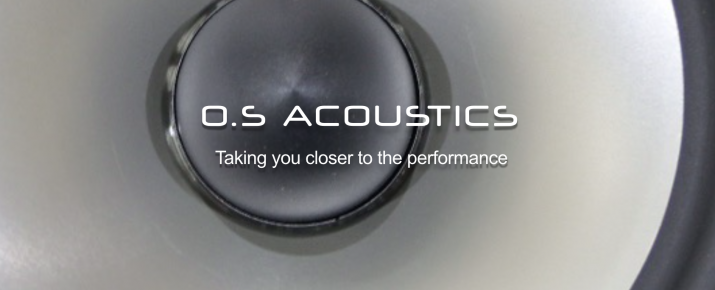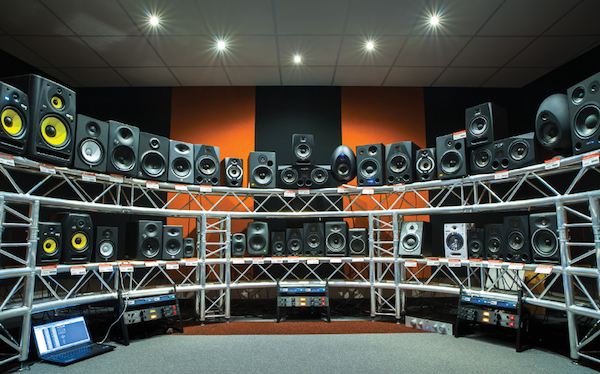How to audition the best studio monitors
Posted on Wed 11 September 2019 in entries
With over twenty years of experience providing clients with monitor demonstrations, OS Acoustics have put together this handy guide with a few tips worth keeping in mind when auditioning new studio monitors.
There are many differing opinions online about the ‘best studio monitors’ which can lead to confusion, in reality, your buying choice is going to depend on what is most suitable for you and your circumstances, so don’t be afraid to trust your judgement.
Here at Absolute Music we have a large dedicated monitor demonstration room designed by Andy Munro Acoustics, the best on the south coast. Featuring the best models from the best manufacturers, with instant switching system and have recently upgraded to the unbelievably good RME ADI2 Pro DAC. Please get in touch with our friendly and knowledgeable staff to arrange your next monitor upgrade.
Take Advice
Even if you have done some research, or taken advice from friends and colleagues it is still a good idea to speak to the sales representative and let them know how you will be using the monitors, give them info like the size of your room, style of music you are working with and a rough idea of your budget. Remember, a good sales representative is there to help you make the right choice and may have some suggestions that you hadn’t considered.
Be prepared
OS Acoustics have seen a lot of retailers move towards high-quality streaming services like Tidal, but it is best to check what playback equipment is available and make plans accordingly. Have an idea of some music you would like to use. OS Acoustics always recommend a few tracks covering various genres, some music you know exceptionally well, a few tracks that are well produced and of course, some of your music if you wish. A busy film score will highlight different aspects of loudspeaker performance than a minimal house track. An orchestral score will help to highlight differences in tone, while a dance music track might reveal more about a speakers transient response and punch.
Important
One of the most important things to check before spending time switching between monitors is that the levels are properly calibrated. The frequency response of the ear is not linear across different listening levels. Hopefully, you already know about Fletcher Munson Curves or Equal Loudness Contours, if not there are plenty of resources online to check out. Therefore, for a fair test, the loudspeakers should be level matched adequately enough so that you are hearing the difference between the loudspeakers and not the non-linear frequency response of the ear. There are some free apps for your phone that are good enough to match levels if the shop hasn’t already done so for you.
Continuity
Try auditioning the same passage of a song across the various models you are evaluating. Believe it or not, we have seen people use a completely different song for each set of monitors they are auditioning, which is not going to be helpful.
Placement
Once you have narrowed down your choice to a couple of different models that you like, it is worth considering where they are in the room compared to each other. The effect of room acoustics is more influential than most people realise. If you can, try switching the position of the monitors, you might be surprised at the amount of difference this makes, especially if one set is in a corner where the low frequencies will be reinforced and the other set is further away from reinforcing boundaries. Comb filtering effects and the way a speaker drives the room modes will differ when located in different physical locations.
Lastly, see if the store will let you try your favourite two monitors in your studio space, where the room acoustics will make them behave differently. You will get a very good idea of how a monitor sounds in a demonstration room compared to the other models, but different rooms can make a big difference to the overall tonal balance. It is always a good idea to try them in your mixing or listening environment as a final check.
Trust
What works in a large professional room, is going to be different to what works in a smaller home set-up, so have confidence in what you are hearing rather than thinking I have to use ‘X’ product because my favourite producer or studio uses them.
Remember
Whatever your budget, you absolutely must include acoustic room treatment. There are some useful, inexpensive software calibration systems on the market. Try to think of these as the icing on the cake. Ideally, we want the room to be as accurate as possible first.


